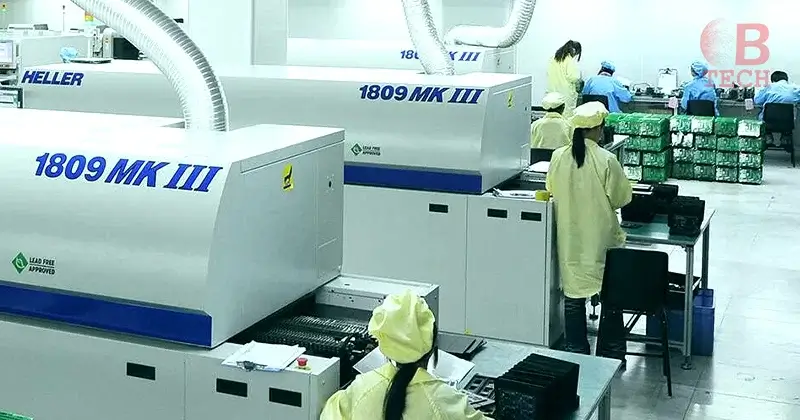Surface Mount Technology (SMT) represents a pivotal advancement in the assembly of Printed Circuit Boards (PCBs) in the ever-evolving landscape of electronics manufacturing. This technology, which involves mounting electronic components directly onto the surface of PCBs, has significantly transformed the industry. Its adoption brings numerous benefits, enhancing efficiency, performance, and the potential for innovation in electronic devices. Here, we delve into the five top benefits of SMT technology in PCB assembly, shedding light on why it has become the cornerstone of modern electronics manufacturing.
#1 – Increased Circuit Density and Reduced Size
One of the most compelling advantages of SMT is the dramatic increase in circuit density it allows. Traditional through-hole technology, where components are inserted into drilled holes on the PCB, inherently limits the compactness of circuits due to the space required for holes and lead connections. In contrast, SMT components are smaller because they lack long leads and can be placed directly onto the PCB surface. This reduction in component size and elimination of through-holes enables a much higher component density.
Furthermore, SMT facilitates the placement of components on both sides of the PCB, effectively doubling the available real estate without increasing the board size. This capacity to create more compact, densely populated boards is crucial in today’s market, where the demand for smaller, lighter, and more portable electronic devices continues to rise. The miniaturization achieved through SMT meets these demands and opens new avenues for device design and functionality, pushing the boundaries of what’s possible in electronics.
#2 – Enhanced Performance at High Frequencies
The performance of electronic devices at high frequencies is markedly improved with SMT, primarily due to the reduced lead length and smaller component sizes. Long leads and through-hole connections can act as antennas, picking up electromagnetic interference (EMI) or radiating their own, which can degrade signal integrity. The compact nature of SMT components minimizes these issues, reducing parasitic capacitance and inductance and enhancing the overall performance of high-frequency devices.
This benefit is particularly significant in RF (Radio Frequency) and microwave communications, where maintaining signal integrity is paramount. SMT allows for the production of PCBs that can operate efficiently at these higher frequencies, supporting the development of advanced communication technologies, such as high-speed internet and cellular networks, as well as specialized applications in defense and aerospace industries.
#3 – Improved Reliability and Durability
The use of SMT significantly enhances the reliability and durability of electronic devices. Components mounted using SMT are bonded to the PCB with solder paste, which, when reflowed, creates a strong physical and electrical connection. This method produces joints that are less susceptible to breakage or failure due to mechanical stress, thermal cycling, or environmental conditions than solder joints in through-hole mounting.
Additionally, the lower mass of SMT PCB components reduces the momentum they can generate under shock or vibration, making the assemblies more stable and less likely to suffer damage in demanding applications. These improvements in reliability and durability are crucial for devices used in automotive, industrial, and military applications, where they must withstand harsh conditions without failure.
#4 – Cost-Effective Manufacturing Process
SMT technology streamlines the PCB assembly process, making it more cost-effective compared to traditional methods. The ability to automate the placement of components reduces labor costs and assembly time, significantly speeding up production rates. Automatic SMT assembly lines can place thousands of components per hour with high precision, reducing the occurrence of errors and the need for manual rework.
The reduction in PCB size also contributes to cost savings, as it allows for more efficient use of materials and reduces the weight and volume of the final product, impacting shipping and handling costs. Furthermore, the enhanced reliability and reduced need for repairs or replacements contribute to lower lifecycle costs of products manufactured with SMT, offering economic benefits to manufacturers and consumers.
#5 – Flexibility in Design
SMT offers unparalleled flexibility in PCB design, accommodating various component types and sizes. This versatility enables designers to optimize the layout for performance, space utilization, and cost. Additionally, placing components on both sides of the PCB and the compatibility with fine-pitch components allow for greater complexity and functionality within smaller form factors.
This design flexibility is essential in the rapid innovation cycles characteristic of the electronics industry. It allows manufacturers to quickly adapt to new technologies and market demands, facilitating the development of cutting-edge products. Whether it’s integrating the latest microprocessors, sensors, or connectivity modules, SMT provides the design freedom needed to push the envelope of electronic device capabilities.



